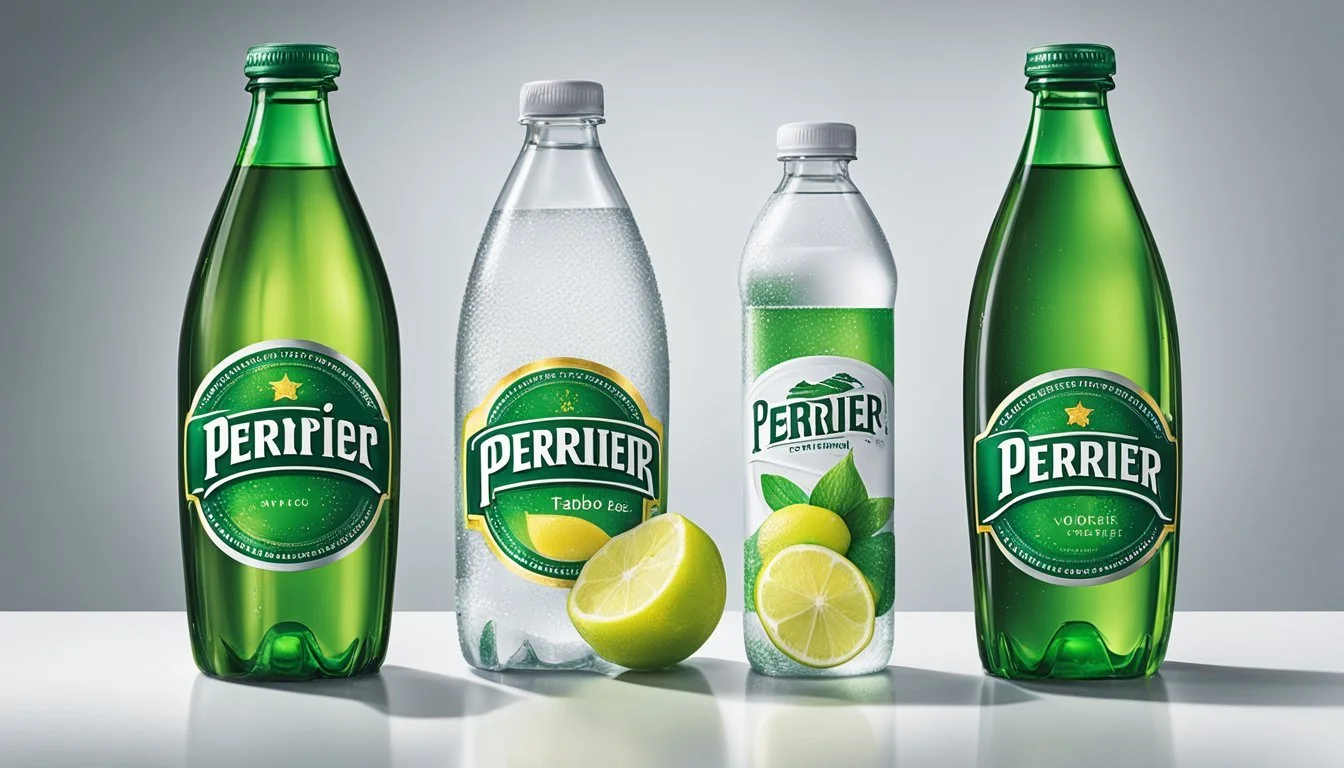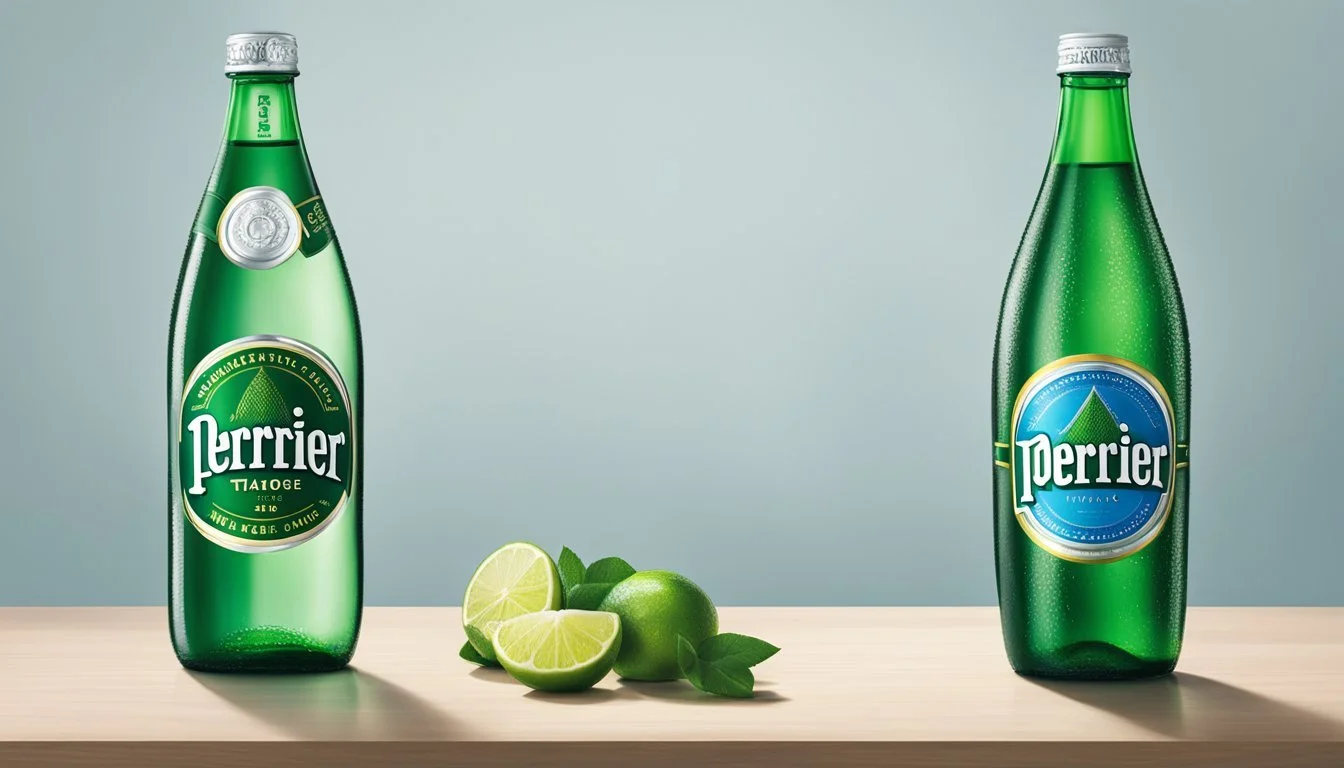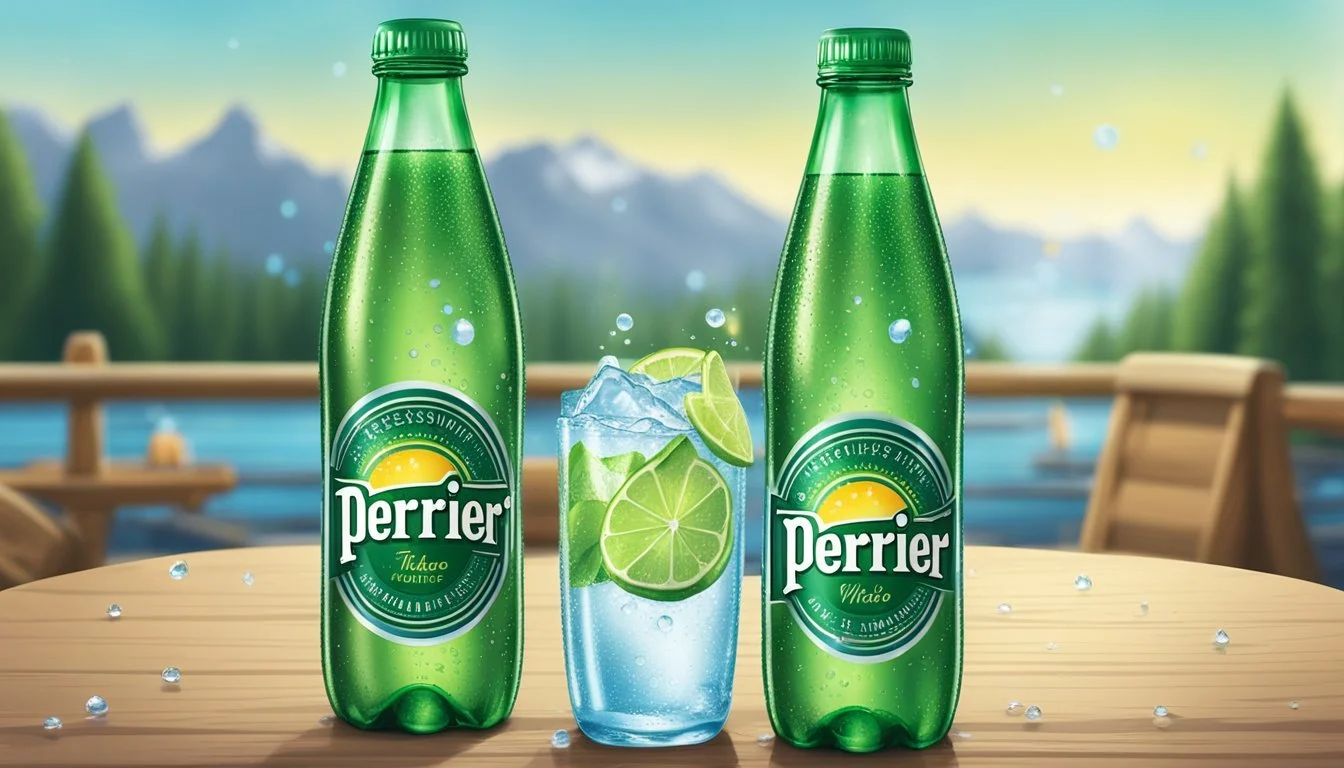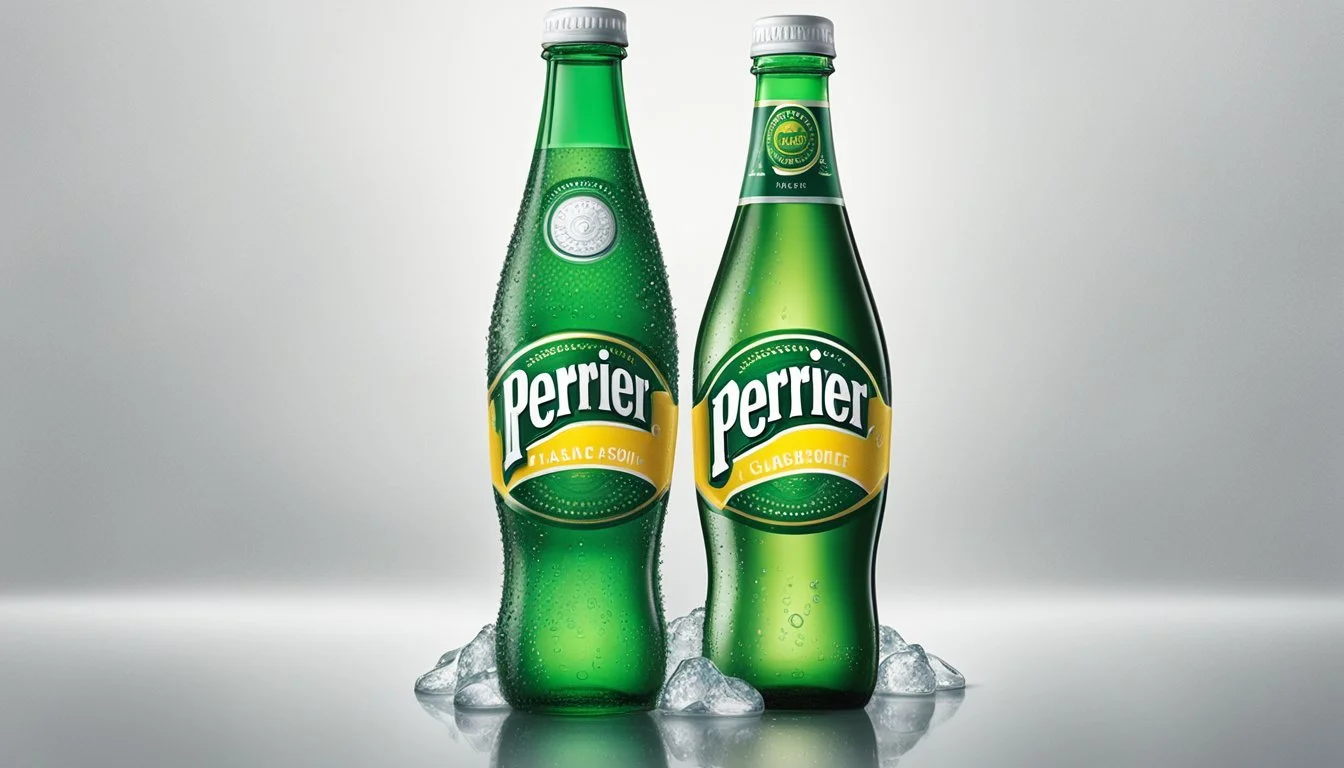Perrier vs. Tahoe
Which Bottled Water is Better for Health and Taste?
Choosing a bottled water that not only tastes great but also offers health benefits can be a challenge. When it comes to two popular options, Perrier and Tahoe, both have distinct characteristics that attract different preferences.
Perrier, a sparkling natural mineral water, is often favored for its unique carbonation and mineral content, sourced directly from Vergèze, France. Its effervescence and reputation for quality have made it a staple choice for those seeking a refreshing, bubbly experience.
Tahoe, on the other hand, prides itself on its pure, crisp taste, sourced from the pristine Sierra Nevada Mountains. For those prioritizing purity and a clean, refreshing taste, Tahoe bottled water stands out as the go-to option. The choice between Perrier and Tahoe ultimately depends on whether you prefer a sparkling mineral flavor or a pure, still water experience.
History and Brand Overview
Perrier and Tahoe are two renowned bottled water brands, each with a unique origin story and distinct characteristics. Understanding their histories and brand ethos gives insight into what sets them apart.
Origin of Perrier
Perrier is a French bottled water brand renowned for its natural carbonation and signature green bottle. The water is sourced from a spring in Vergèze, Southern France.
Perrier was founded in 1863 by a local doctor called Louis-Eugène Perrier. It gained international fame in the early 20th century, especially gaining popularity in the United States in the 1970s and 1980s.
Today, it continues to be a leader in the sparkling water market. Perrier is owned by Nestlé Waters, part of the Nestlé Group, which further strengthened its market reach.
Origin of Tahoe
Tahoe bottled water is sourced from pristine locations near the Italian Alps, known for their pure and clean water. The company focuses on providing high-quality spring water, emphasizing minimal processing to retain natural minerals.
Tahoe was founded in the early 2000s with a commitment to sustainability and environmental responsibility. Their operations use eco-friendly packaging and energy-efficient processes.
Tahoe has rapidly grown in popularity, especially among consumers who prioritize purity, taste, and environmental impact. Its branding emphasizes a commitment to natural purity and superior quality.
Production Processes
Understanding the production processes of both Perrier and Tahoe bottled waters reveals their unique approaches to sourcing and preparing their products for consumers. Each brand's method impacts the final quality and characteristics of their water.
Perrier Extraction and Bottling
Perrier is renowned for its sparkling mineral water, sourced from the Vergèze spring in Southern France. The extraction process begins with drawing the natural mineral water from the spring. Key minerals such as calcium, magnesium, and bicarbonate contribute to Perrier's unique taste and health benefits.
An important aspect is the addition of natural carbon dioxide to the water, achieved during bottling. Perrier captures and reintroduces the gas from the spring to maintain its distinct fizz. This maintains the integrity of the water’s naturally sparkling character.
During bottling, the water undergoes minimal processing to preserve its natural mineral content. The green glass bottles, symbolic of Perrier, are sterilized to ensure hygiene. Then, they are filled with the mineral water and sealed to maintain freshness and carbonation until consumption.
Tahoe Source and Purification
Tahoe's water comes from an artesian aquifer located high in California's Sierra Nevada Mountains. At 7,000 feet above sea level, the aquifer's water is sourced from natural springs, ensuring a pure and fresh taste. The remote location guarantees minimal human contamination and pristine water quality.
The purification process for Tahoe water uses advanced reverse osmosis techniques. This method effectively removes impurities and contaminants, resulting in exceptionally pure spring water. The reverse osmosis process also ensures that the water maintains a clean and crisp flavor.
Tahoe focuses on sustainability in its bottling process. The water is bottled closer to the source to reduce transportation emissions. Additionally, the company uses environmentally-friendly materials and practices to ensure high-quality water with a low ecological footprint.
Chemical Composition
The mineral composition of both Perrier and Tahoe waters offers insight into their nutritional benefits and potential health impacts. Each water type contains various minerals that contribute to human health in different ways.
Mineral Profile of Perrier
Perrier is known for its sparkling mineral water, naturally carbonated from a spring in Vergèze, France. Its mineral content includes calcium, magnesium, sodium, and potassium.
Calcium: One of the significant minerals in Perrier, calcium contributes to bone health and supports various bodily functions.
Magnesium: Essential for muscle and nerve function, magnesium in Perrier also helps regulate blood pressure.
Sodium: Present in moderate quantities, sodium maintains fluid balance but should be consumed in appropriate amounts.
Potassium: This mineral aids in proper cellular function and heart health.
Compared to many bottled waters, Perrier’s mineral content adds a slight taste and potential health benefits. However, it is important to consider individual dietary needs when assessing its suitability.
Mineral Profile of Tahoe
Tahoe bottled water typically comes from sources in the Sierra Nevada. Its mineral content is generally characterized by lower levels of minerals compared to mineral waters like Perrier.
Calcium: Found in smaller amounts, calcium in Tahoe contributes to daily intake but is less concentrated.
Magnesium: Present in trace amounts, magnesium supports vital body functions but in lesser quantities than in Perrier.
Sodium: The sodium content is generally low, making it suitable for those monitoring sodium intake.
Potassium: Similar to magnesium, potassium is present in minimal amounts, contributing to overall hydration without significant alterations to taste.
Due to its lower mineral content, Tahoe water offers a more neutral taste, suitable for those preferring minimalistic hydration without added flavors.
Health and Safety Standards
Evaluating the health and safety standards for Perrier and Tahoe involves examining their regulatory compliance and measures to ensure clean drinking water. This includes scrutinizing federal oversight and identifying potential contaminants in both brands.
Regulatory Compliance for Perrier
Perrier is subject to stringent safety standards enforced by both the U.S. Food and Drug Administration (FDA) and the Environmental Protection Agency (EPA).
FDA Regulations: As a bottled water company, Perrier must comply with FDA regulations that mandate testing for various contaminants, including lead and synthetic chemicals. Perrier’s compliance is verified through regular inspections.
EPA Standards: Although primarily responsible for tap water, EPA sets standards for bottled water under the Safe Drinking Water Act. Perrier aligns its practices with these standards, ensuring the water remains free from harmful contaminants such as PFAS chemicals.
Perrier’s rigorous quality control measures include multiple filtration stages to remove possible contaminants and preserve the natural mineral content. Bottling processes are closely monitored to prevent contamination, ensuring that every bottle delivers clean drinking water.
Regulatory Compliance for Tahoe
Tahoe adheres to the same federal regulations as other bottled water brands, ensuring product safety and cleanliness.
FDA Oversight: The FDA includes bottled water under its jurisdiction, requiring Tahoe to regularly test for contaminants, such as lead and bacteria. Tahoe's adherence to these regulations is mandatory and verified through periodic audits.
Water Quality Monitoring: Tahoe is also subject to the EPA guidelines which emphasize maintaining clean water standards. Compliance involves routine testing for known contaminants and adherence to strict bottling procedures.
To meet these regulations, Tahoe employs advanced purification technologies. These processes not only eliminate potential contaminants but also preserve essential minerals, thus providing safe and quality drinking water. Regular third-party testing further assures consumers of Tahoe's commitment to safety and health.
Taste Profile and Carbonation
Perrier and Tahoe offer distinct taste experiences and carbonation levels, appealing to different preferences in bottled water. Understanding these characteristics can help guide choices based on individual tastes and usage scenarios.
Flavor Characteristics of Perrier
Perrier sparkling water is renowned for its crisp and refreshing taste with a pronounced mineral profile.
Sourced from natural springs in Vergeze, France, Perrier is naturally carbonated, capturing both the water and carbon dioxide separately. This results in a unique fizziness that is more intense than many other sparkling waters.
The bubbles are fine and lively, making Perrier a popular choice among those who enjoy a vibrant, effervescent drink. Its slight mineral taste can sometimes be described as earthy, which might not appeal to everyone. Perrier also offers flavored sparkling waters that incorporate subtle hints of fruit, enhancing the drinking experience without overwhelming the palate.
Beverage Experience with Tahoe
Tahoe bottled water is primarily known for its purity and smooth taste. Unlike Perrier, Tahoe tends to focus more on still or lightly carbonated options, catering to those who prefer a less intense carbonation.
Tahoe's water is often sourced from pristine locations, contributing to its clean and refreshing taste profile. It lacks the strong mineral aftertaste found in Perrier, making it a favorite for individuals who prefer a subtler flavor palette.
While it may not have the vibrant bubbles of Perrier, Tahoe provides a gentler carbonation that still offers a pleasant sensation without the intensity found in sparkling water enthusiasts' favorites. This makes Tahoe an appealing option for daily hydration or as a mild, refreshing drink during meals.
Environmental Impact and Sustainability
When comparing Perrier and Tahoe, it's crucial to examine their sourcing practices, carbon footprint, and environmental sustainability. These aspects highlight each company's approach to mitigating the ecological impact of bottled water production.
Perrier’s Commitment to the Environment
Perrier sources its water from natural springs in Vergèze, France, and emphasizes the preservation of these sources. They use glass and PET bottles, seeking to balance packaging sustainability and consumer convenience.
Perrier's carbon footprint reflects efforts to reduce emissions through optimized transportation and production methods. By employing production techniques that limit CO2 emissions, Perrier strives to mitigate its environmental impact. Their involvement in recycling initiatives also demonstrates a commitment to reducing plastic waste and promoting environmental sustainability.
Tahoe’s Eco-friendly Initiatives
Tahoe places a strong emphasis on eco-friendly practices, sourcing water from the pristine Sierra Nevada mountains. They focus on reducing the carbon footprint by using locally sourced materials and minimizing transportation distances.
Tahoe utilizes 100% recycled materials for their bottles, prioritizing sustainability and reducing environmental harm. Consumers benefit from their dedication to environmental stewardship, evidenced by their participation in various conservation projects. Tahoe aims to set a standard within the industry for responsible production practices, aligning with broader eco-conscious trends.
Consumer Perception and Market Presence
Consumers have distinct views on Perrier and Tahoe, influenced by marketing and brand loyalty. Each brand has carved out a unique place in the market, with significant competition and varying levels of brand recognition.
Public Image of Perrier
Perrier is well-known for its natural carbonation and iconic green bottle, setting it apart in the sparkling water segment. The brand has positioned itself as a luxurious and sophisticated choice, appealing to health-conscious and upscale consumers.
Its historical success since the 1980s has helped it maintain its reputation. Perrier is often seen as a trendsetter in the bottled water industry, leveraging its French heritage for added allure.
Brand loyalty plays a significant role, as many consumers prefer Perrier for its distinct taste and image. As part of the Nestlé Waters portfolio, Perrier benefits from extensive marketing resources, further solidifying its powerful market presence.
Market Share of Tahoe
Tahoe, while not as globally renowned as Perrier, has made significant inroads in the bottled water market. It targets a different demographic, focusing on providing premium quality water sourced from natural springs.
Tahoe's market presence is growing, especially in the U.S., where consumers increasingly seek pure, local options. The brand emphasizes environmental sustainability and community support, appealing to socially responsible buyers.
Competition remains fierce, but Tahoe's commitment to purity and quality is gaining recognition. Their efforts in community engagement and environmental sustainability are crucial factors driving consumer interest and loyalty, setting them apart in a crowded market.
Pricing Comparison
When comparing Perrier and Tahoe bottled waters, it's crucial to consider the cost-effectiveness of both brands. While Perrier is often viewed as a luxury option, Tahoe offers competitive pricing.
Affordability of Perrier
Perrier, known for its sparkling and mineral-enriched water, often positions itself in the luxury segment of the market. A typical bottle of Perrier can range from $1.50 to $3.00, depending on the size and retailer, with prices significantly varying at different outlets.
Retailers like Costco often sell Perrier in bulk packages, providing a more cost-effective option for frequent consumers. Despite its higher price point, many consumers are willing to pay for Perrier's distinct taste and reputed quality.
Tahoe's Price Point
Tahoe bottled water, on the other hand, is marketed as a more affordable option. Typically packaging its products in standard and larger sizes, a bottle of Tahoe water can cost between $1.00 to $2.00, which is notably less than Perrier.
Consumers can often find Tahoe water at supermarkets and large retail chains, including Costco, where it is valued for its budget-friendliness. This pricing strategy appeals to consumers who prioritize cost without compromising on quality.
Final Analysis
Both Perrier and Tahoe bottled waters have unique qualities and attributes that cater to different preferences and needs. Evaluating them based on distinct factors such as quality, taste, and social impact can help determine which one is better for consumers.
Advantages and Disadvantages of Perrier
Advantages:
Perrier is widely recognized for its natural carbonation and distinctive effervescence, setting it apart from other sparkling waters like San Pellegrino or Topo Chico.
It boasts a unique mineral blend sourced from the Vergèze spring in France, which adds to its sophisticated appeal.
The brand association with luxury and refinement makes it a preferred choice for many.
Disadvantages:
The higher price point may deter budget-conscious consumers when compared to brands like Poland Spring or Nestlé Pure Life.
Perrier's intense carbonation might not appeal to all consumers, particularly those who prefer flat water or mild carbonation.
The distinctive taste due to its mineral content may not be universally appealing compared to more neutrally-flavored waters like Smartwater or Aquafina.
Advantages and Disadvantages of Tahoe
Advantages:
Tahoe water is marketed as a pure and clean option, often sourced from pristine environments, potentially rivalling Icelandic Glacial and Mountain Valley Spring Water in terms of purity.
It typically employs advanced filtration methods to ensure high-quality water free from contaminants, similar to Core Hydration’s multi-stage purification process.
Tahoe’s brand often emphasizes sustainability and environmental considerations.
Disadvantages:
Tahoe may not have the same brand recognition or luxury appeal as premium brands like Evian or Voss.
The availability might be limited in some regions, making it less accessible compared to more widely distributed waters such as Dasani or Crystal Geyser Natural Alpine Spring Water.
Lack of carbonation options could be a downside for those who enjoy sparkling water.
In this analysis, the choice between Perrier and Tahoe ultimately depends on individual preferences regarding taste, carbonation, purity, and brand values.
More About Perrier
Icelandic Glacial vs Perrier: Which Bottled Water is Better?
Mountain Valley Spring Water vs Perrier: Which Bottled Water is Better?
Perrier vs Kirkland Signature: Which Bottled Water is Better?
Perrier vs Richard's Rainwater: Which Bottled Water is Better?
Perrier vs Whole Foods Italian Still Mineral water: Which Bottled Water is Better?









